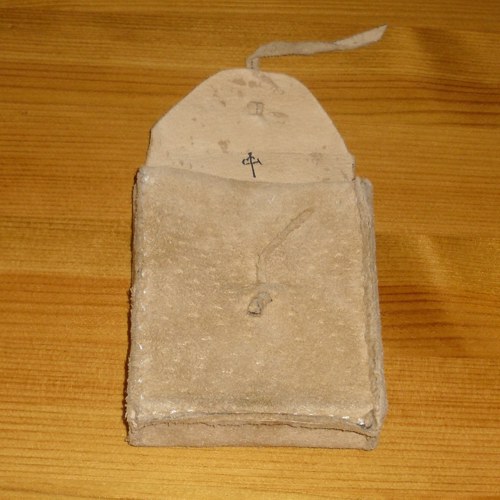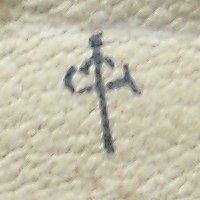
It could well be old, because it has square corners and no indeces; the back is patterned but not bordered. It's not English, though, so those rules of thumb may not apply here.
On the face of it, it's a French National pattern. However, it doesn't have any blue inking, just black, red, yellow and green (which usually, but not always, substitutes for blue). There are no names on the cards (those particular court cards have been labeled Cesar, Rachel and Hector since the days when they were full-length). Francophone Belgium uses cards without the names, but they do use blue. There's a Genoese pattern that uses mainly green, but it does use blue.
OK, well it turns out that the Belgium version of the pattern was taken up internationally by several former French colonies in North Africa and the Middle East, from which it spread to neighbouring countries. Turkey even keeps the usual V D R initials for J Q K, despite the fact that the Turkish names for them are different (Valet is Vale, Dame is Kiz, Roi is Papaz). This international version uses green rather than blue. So: this is a deck from the Arabic world. That makes sense, because the marque on the Ace of Diamonds looks to be in Arabic. I think I've scanned it the right way up, but could be wrong.
Armed with this information, a little rootling around on the ol' Internet identifies these cards as being Quadrilato no. 44. manufactured by Leonard Biermans in Belgium, circa 1936. So, that's that, then.
Well, it explains their age and origins, but not everything. See, there are only 40 cards in the deck. There are only supposed to be 40 cards in the deck. There are no eights, nines or tens. What game was intended to be played with them?
The classic French deck omits the two to six and is used for Piquet. Very few games require partial decks omitting eight to ten; those that do use different suits to HCDS because they're Spanish, Portuguese or Italian in origin. Ones with enough currency to merit a mention on Pagat.com are: Sueca, Mus, Scopone, Cuarenta, Tressette, Truco, Bricola and L'Hombre.
None of these have any obvious connection with North Africa (particularly with Tunisia, which is where most of these packs were sold). L'Hombre is apparently played a lot in Denmark, though. I also know of an extinct game called Primero that used the same deck, but it died out so long ago that its rules had to be reconstructed from historical descriptions...
If these packs were being manufactured in sufficient numbers that people were buying them in preference to 52-card packs, there must have been some demand for them. What were people using them to play, though?
Well, after some more rootling around, it turns out they were used to play Chkobba. It's a game based on Scopa that was brought to Tunisia by Italian migrants.
OK, well that's got to the bottom of that.
If you want your own set of 1936 Belgian-for-Tunisia playing cards, they're actually quite cheap to get hold of — £4 plus £2 postage for a mint, sealed pair of decks on on eBay. So why did I pay £6.50 plus £3.65 postage for a used deck?
Ah, well the thing is, I wasn't actually interested in the cards. I was interested in the box they came in:

It's hand-made suede. It's meant for a wider, shorter deck than the Tunisian one so has a different origin.
The symbol looks as is it's Chinese; indeed, it would make a great deal of sense if it were as it's very close to the symbol for middle; the Chinese name for China translates as "Middle Country", so this symbol is sometimes used to mean "made in China". However, the Chinese symbol is always drawn the same way, using four pen strokes. This symbol is more intricate:

It looks to be a sword symbol. I can't tell if it's just a sword with an elaborate handguard or a sword with a J monogram over it. This time, rootling around the ol' Internet didn't turn anything up.
Still, I don't care: it's well worth the £10 I paid for it, plus I got a free deck of 1936 Chkobba cards, too.